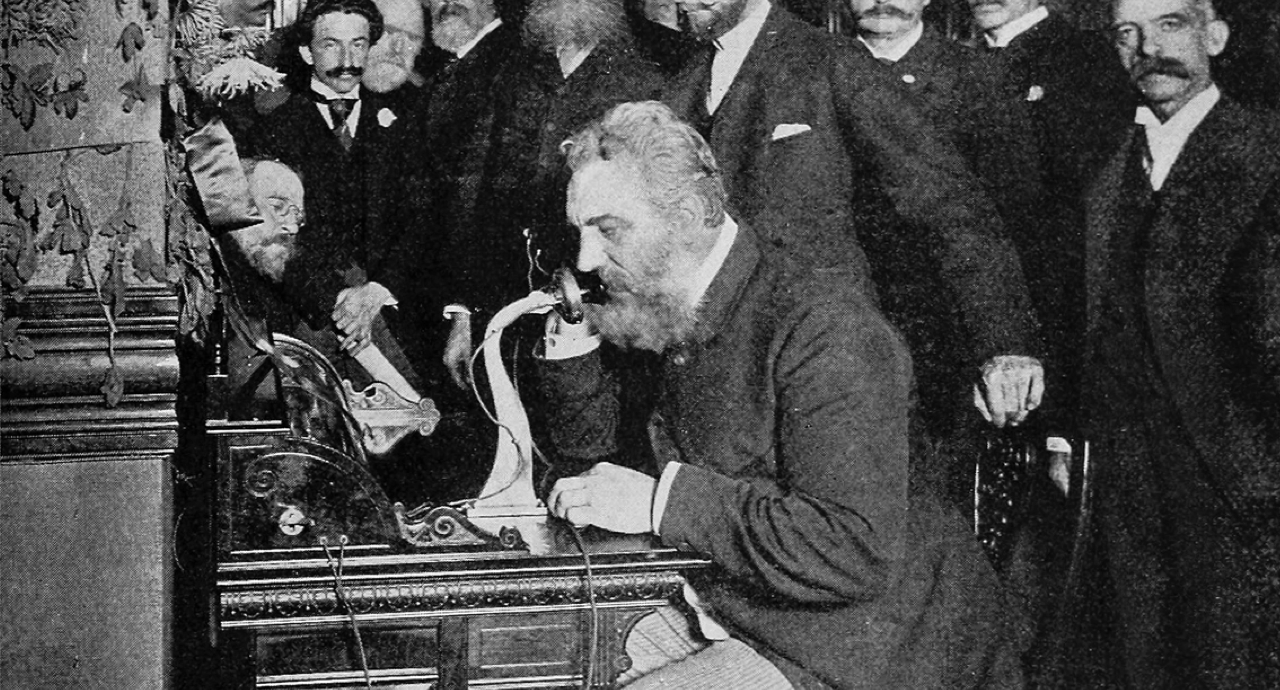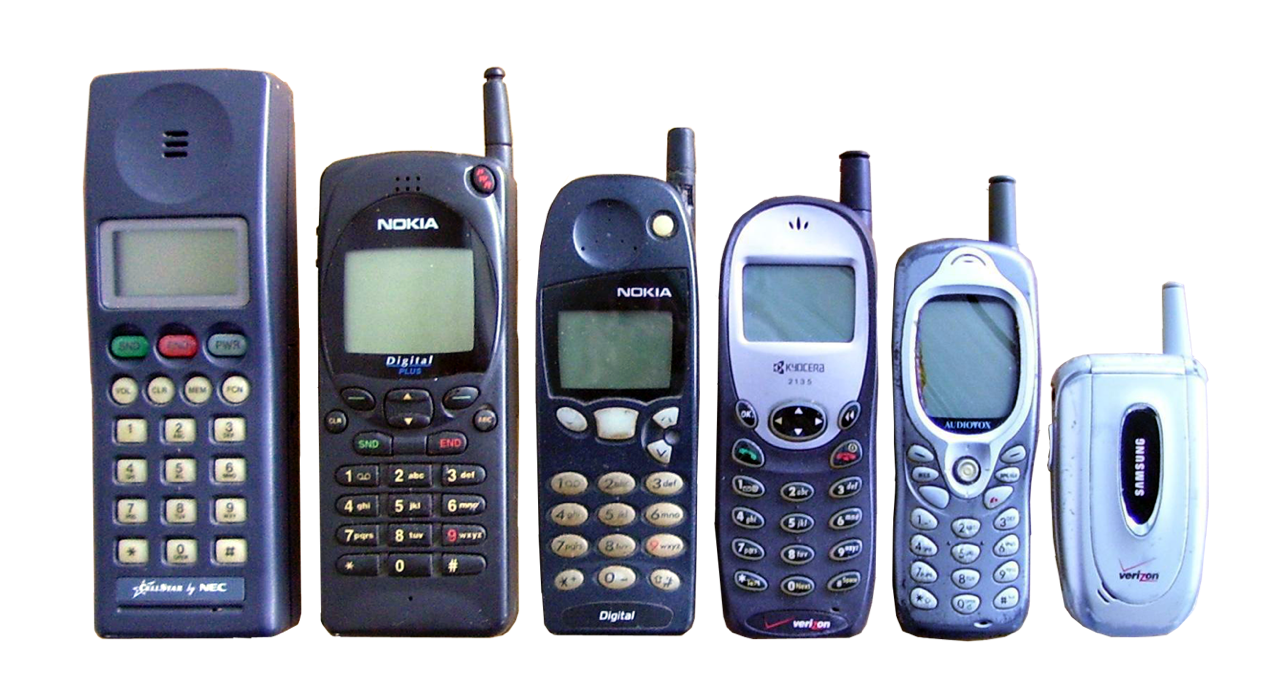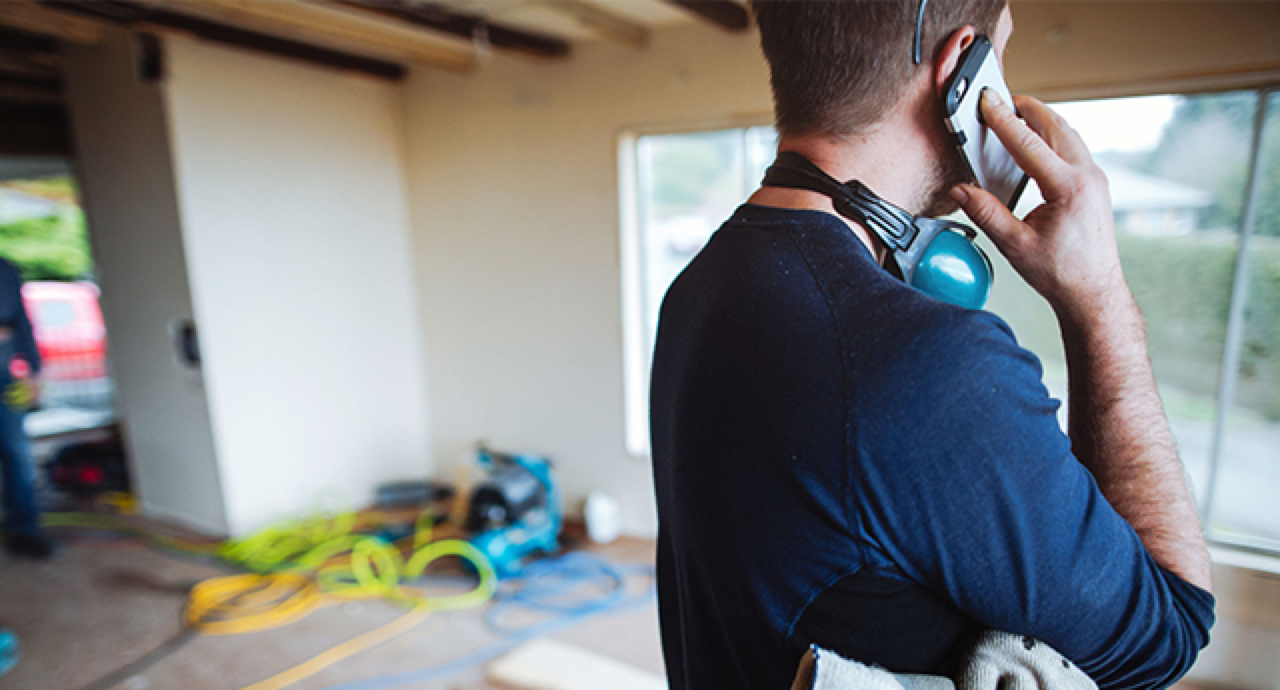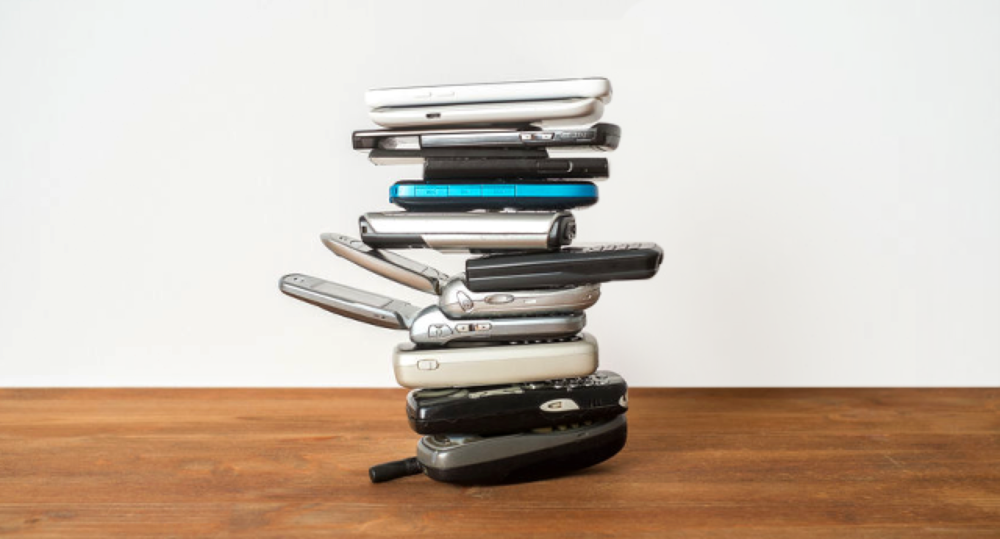While the telephone has changed a lot since its invention, its original purpose remains the same—to connect people who aren’t in the same place. Ironically, they can have the opposite effect these days, but that’s another story. From Morse code to software code, the phone has a long and intimate history in our work and personal lives. They have undoubtedly changed how we interact, and the work phone of the future will continue transforming how businesses connect with their customers.
Early history
In 1876, the U.S. awarded Alexander Graham Bell the first telephone patent. If that name rings a bell, that’s because he’s credited as the inventor of the telephone. To be fair, others made telegraph and speech transmission innovations before him. But it was Bell who invented the first practical telephone. His patent was aptly titled, “Improvements to Telegraphy,” and is widely considered the most valuable patent ever issued.
Bell went on to found the American Telephone and Telegraph Company (AT&T) in 1885. AT&T has since dropped their telegraph service, but you can bet there are Morse code apps available for iPhone or Android—again with the irony.
It’s difficult to grasp, let alone calculate, the economic and social impacts of the telephone. But it undeniably changed how we communicate. The book, America Calling, even suggests the telephone altered the physical layout of our cities.

Mass adoption
From 1900-1950, the proliferation of the telephone was swift. For context, adoption rates of the telephone are comparable to game changers such as electricity, automobiles, and refrigeration.
As soon as more than two phones existed, they assigned numbers to identify them. At first, phone numbers were only 4 or 5 digits. And to call someone, an operator had to, quite literally, connect the dots between phones on a physical switchboard.
Initially, the idea of having a real-time conversation with someone across the country was unthinkable. Then in 1913, the first long-distance phone line linked San Francisco to New York. By 1918, 10 million telephones were in service. Transatlantic services began in 1927. And the snowball kept rolling.
As quickly as households adopted phones, businesses followed. In fact, the oldest known phone number to still be in use today belongs to a business. New York City’s Hotel Pennsylvania acquired the number 6-5000 after opening in 1919, which evolved into 212-736-5000 in the decades to follow.

The modern business phone
Technology from 1950-2000 spawned the business phones most people remember dominating the desk. The classic rotary slowly morphed into touch-tone and cordless phones. And it wasn’t until the 80s and 90s that telecommunications crept into the computing world.
Although the internet piggybacked on our telephone infrastructure, it would forever change the phone itself. The 2000s saw robust multi-line phone solutions go digital. Most of these KTS, PBX, IP-PBX and other acronym-worthy phone systems were designed for large companies (we’ll spare you the technical details). Ultimately things got cheaper, yet more expensive. More feature-rich, yet more complicated. There were less physical wires, but more technical restrictions.
Around 2005, VoIP (voice over internet protocol) services started popping up everywhere. The internet—as with most industries—made calling more accessible than ever. These VoIP services commonly refer to themselves as “cloud-based” or “virtual” phone systems. But to oversimplify, VoIP is internet calling, which today is commonly done over a WiFi or mobile data connection.
From there, mobile phones spiked. Cellular technology, service, and reliability continued improving, making the need for landlines less and less warranted. And just as we were getting used to our computers, the mobile revolution shifted into high gear. When the App Store launched in 2008, everything changed. Again.

The future of the phone
What you can download as an app is far more powerful, accessible, and user-friendly than anything confined to a desk (or even a laptop with WiFi for that matter). Calling today’s iPhone and Android devices a phone is like calling a computer a typewriter.
Apps are already helping businesses do some pretty amazing things. They’ve transformed how small businesses owners accept payments, manage tasks, schedule appointments, track inventory, log expenses, file taxes, and much more. In the process, apps are leveling the technological playing field between corporations and mom-and-pop shops. Today, anyone with a phone and a dream can start a business. All the business tools you need are already in your pocket.
…the future business phone isn’t a phone at all. It’s an app like Sideline that’s changing the way businesses connect with their customers.
What’s left of the phone of the 1900’s is just the idea—connecting people who are in different places. That’s why the future business phone isn’t a phone at all. It’s an app like Sideline that’s changing the way businesses connect with their customers. In the years to come, innovations in messaging and automation will make it even easier for mobile professionals to work smarter, provide better customer service, and grow their businesses. And it will all happen on the devices we can hardly justify calling a phone.
To learn more about Sideline’s features and how they can make your life easier and grow your business, take a look at some of the blog posts listed below.
- 5 reasons every professional needs a 2nd phone number
- SMS for your customers: 10 tips to make business texting work for you
- How to make your small business more responsive with Auto-Reply
- One number, multiple phones: How Sideline is changing the way teams work together
![]()
Get Featured!
We’re always looking for new professionals to feature throughout our website and blog.
If you are a Sideline user and want to share your story with the community,
fill out the form below for a chance to have your business featured!
As always, follow us on Facebook, Instagram, and Twitter to keep up
with everything that’s happening in the Sideline community.








